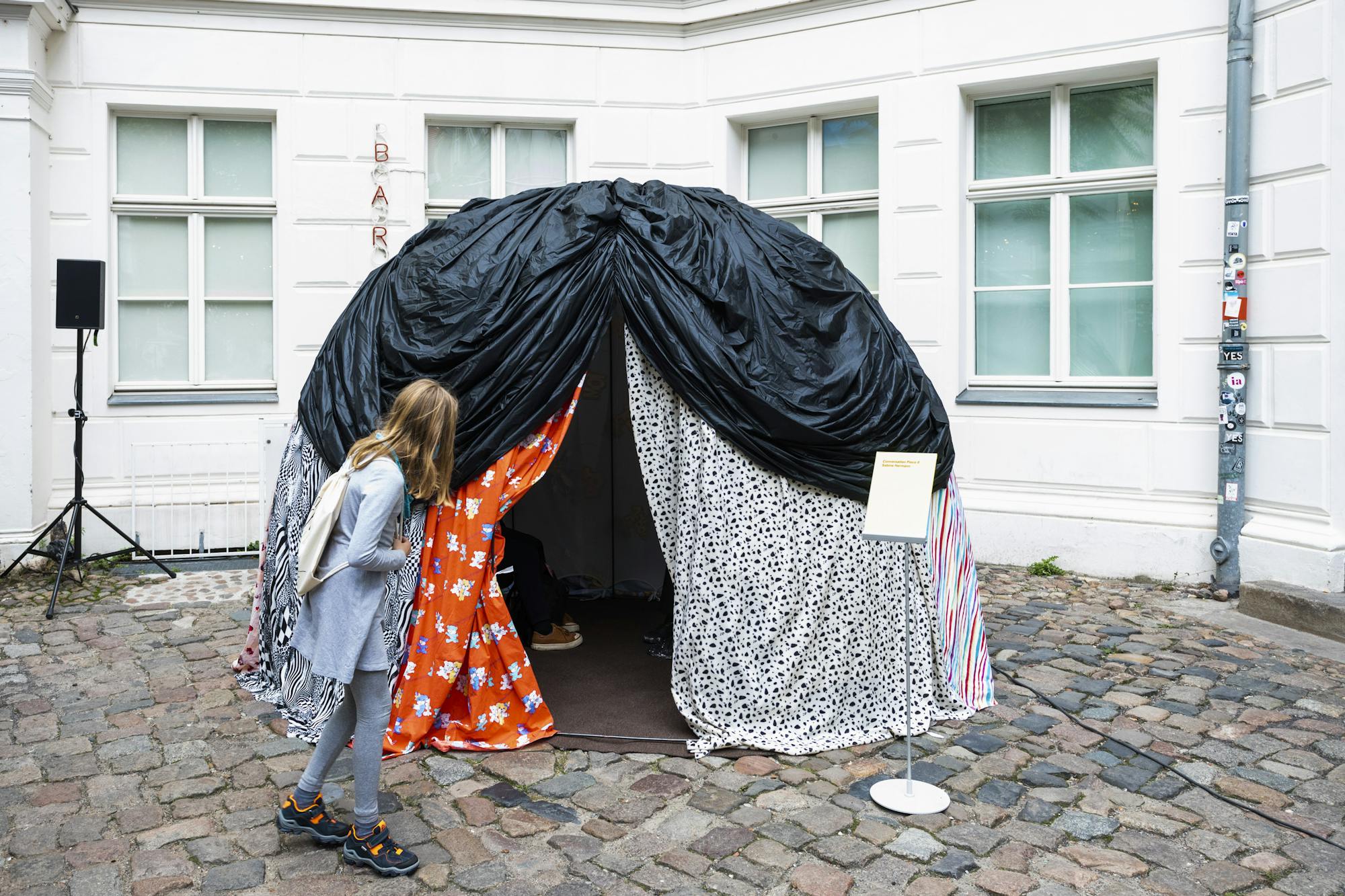How do our inner lives relate to the codes and etiquettes that shape our interactions on the social stage?

Recently, Future Archives invited artist and scenographer Celeste Burlina to talk about her concept for Conversation Piece II, which was part of the 30 Years of KW Anniversary Weekend curated by the Performance Agency and supported by an Investigation grant of the Kemmler Foundation.
Kemmler Foundation: Celeste, from what I understand, working as a set designer and scenographer is something that only entered your life a couple of years ago, right?
Celeste Burlina: True! I am an engineer by training and I completed a PhD in 2018. My interest was in aerodynamics, on how buildings and structures such as bridges react to wind. At that time I was living in Copenhagen. It was when I was offered a job at architecture studio sub in Berlin, working for clients such as Balenciaga and Anne Imhof, that I slowly started to shift my focus.
Why do you think that shift happened?
Mostly I was just curious. But generally speaking, art was always part of my life. It was always in me. As a teenager I was a graffiti writer and I was part of the punk scene in the small northern Italian town that I grew up in. My approach to art was always coming from aleatory events in my life. I remember being young and being really struck by the Francis Bacon paintings in Teorema, the Pasolini movie.
Your design for Conversation Piece II has a very distinctive feel to it…
The idea for the statue came from the aesthetic of circuses and the carnivalesque. Also, in the last couple of months I’ve been reading a lot of Dostoyevsky, which has a lot to do with the idea of the serio-comical. It is about the underground. What happens underneath the big structure, the big structure of society, if you will?
Your practice is grounded in scenography. Can you talk about the dramaturgical ideas that you pursued in creating the work?
I wanted to create this black dome. When you approach it, you have no idea what it is and the aesthetic is kind of severe. And then to unveil what is underneath: all these bright and colourful textiles and these crazy patterns. Nothing is coherent but somehow it works well together. It’s through a system of curtains that you lift the black envelope, and you reveal the truth of human nature.
How do you want people to interact with the statue?
The way you can lift these curtains produces a million different combinations, even a centimetre makes a difference, so you will always create your own experience, your way of approaching it. It was important for me to not be entirely in control. I wanted to leave that to the people interacting with the work. I want to create something, but I don’t want to be in charge.
Do you see a connection to Maria Loboda’s original work for the first Conversation Piece design?
I think there is a connection in the way it relates to certain things like the dress code, the etiquette of how you’re supposed to behave and then the contrast to what is underneath. The grotesque and the immoral. But also: the playfulness of things.
The production of Conversation Piece II was supported by The Performance Agency and the Kemmler Foundation and exhibited at 30 Years of KW: Anniversary Weekend 18–19 September 21.
Artist: Celeste Burlina
Production Assistance: Ayscha Zarina Omar
Camera: Anne Sophie Lohmann
Edited by: Pablo Betas and Yiqi Yang
Celeste Burlina
Celeste Burlina’s background is in engineering architecture, exhibition and set design. She is also a multidisciplinary researcher and writer, currently based in Berlin. Her work focuses on the dramaturgy created by the connection between human interactions, art and structural engineering.
As an independent scenographer, she works with institutions such as Tai Kwun Contemporary in Hong Kong and Kunsthalle Münster in Aachen. Celeste previously worked at the design and architecture studio sub, where she completed projects for Balenciaga as well as Tate Modern in London, Schinkel Pavillon in Berlin and Palais de Tokyo in Paris.